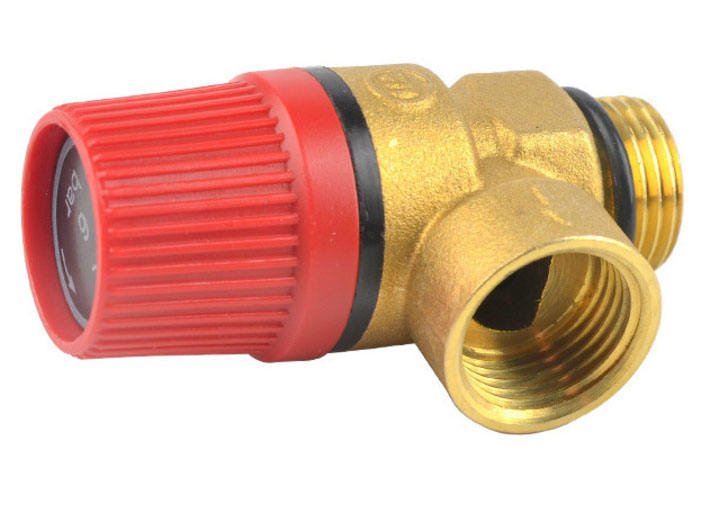Leaky valves in your plumbing or heating system can be a real headache, causing water waste, higher bills, and even damage to your property. If ignored, these leaks can lead to costly repairs or system failures, disrupting your operations or projects. The good news? With the right approach, you can fix a leaky valve and prevent future issues—read on to learn how!
To treat a leaky valve, first identify the cause, such as worn seals or debris buildup. Tighten connections, clean or replace faulty parts like washers, or install a new valve if needed. Regular maintenance and high-quality valves, like those from IVALVECRAFT, prevent leaks and ensure stable performance.
Curious about the specifics? Dive into our detailed guide below to understand why valves leak, where to find them, and how to keep your system running smoothly.

What Causes an Air Release Valve to Leak?
Air release valves are critical in plumbing and heating systems, letting out trapped air to maintain proper pressure and flow. But when they start leaking, it’s usually due to a few common culprits. One major cause is debris or sediment buildup inside the valve, which prevents it from sealing properly. This is especially common in systems with older pipes or poor water quality, where rust or particles can clog the valve’s mechanism. Another reason could be worn-out seals or gaskets. Over time, the rubber or silicone components degrade, especially in high-pressure systems like boilers, leading to small but persistent leaks.
Sometimes, improper installation is to blame. If the valve isn’t aligned correctly or the connections are too loose, water can seep out. High boiler pressure can also stress the valve beyond its capacity—say, exceeding a boiler relief valve 30 psi rating—causing it to fail. External factors like temperature changes or vibrations in industrial setups can loosen fittings, too. For instance, a furnace pressure relief valve leaking might signal a pressure spike or a damaged seal from constant cycling.
To fix this, start by inspecting the valve for visible debris or damage. Cleaning it might solve minor issues, but if seals are worn, replace them promptly. If the valve itself is old or low-quality, swapping it for a durable pressure relief valve from a trusted brand like IVALVECRAFT ensures long-term reliability. Regular maintenance, like flushing the system and checking pressure levels, can prevent these problems. For businesses like plumbing wholesalers or construction procurement teams, stocking high-quality air release valves reduces callbacks and keeps projects on track.
Where Can a Pressure Relief Valve Be Located?
Finding a pressure relief valve in a plumbing or heating system is key to diagnosing and fixing leaks. These valves are designed to release excess pressure, protecting systems like boilers or furnaces from damage. Typically, a boiler pressure relief valve location is near the top or side of the boiler, often connected to a boiler pressure relief valve discharge pipe for safe water or steam release. In industrial setups, you might find them on manifolds, mixing pump heating centers, or even radiators, depending on the system design.
For larger systems, like those in commercial buildings or construction projects, pressure relief valves can also be found on main water lines or secondary loops to regulate flow and pressure. In a brass thermostatic radiator valve setup, for example, they might be integrated into the manifold to control pressure across multiple radiators. If you’re dealing with a boiler pressure valve in a residential or commercial furnace, check near the heat exchanger or outlet piping. The exact spot depends on the system’s layout, so always consult the equipment manual or a professional for complex installations.
Knowing the location helps when troubleshooting leaks or planning maintenance. A leaking valve might indicate a pressure issue or improper installation, especially if the boiler pressure relief valve discharge pipe is misaligned or clogged. For purchasing officers or building materials wholesalers, ensuring your stock includes versatile, high-quality valves—like IVALVECRAFT’s pressure reducing valves or brass safety valves—makes it easier for installers to place them correctly. Regular inspections and using valves rated for specific pressures, like boiler relief valve 30 psi, prevent leaks and extend system life.
Summary: Keep Your Valves Leak-Free with IVALVECRAFT
Leaky valves can disrupt your operations, but understanding their causes and locations makes all the difference. Air release valves leak due to debris, worn seals, or pressure issues, while pressure relief valves are typically found near boilers, manifolds, or main lines. By choosing high-quality products and maintaining your systems, you can avoid costly repairs and ensure stable performance. For businesses in Russia, Poland, Romania, the UK, Germany, or the Czech Republic, IVALVECRAFT offers reliable brass thermostatic radiator valves, pressure reducing valves, and more. Stock up through Alibaba, Made-in-China, or trade shows, and keep your projects running smoothly.
Choose IVALVECRAFT, choose reliable partner, enjoy the high quality and best service.


